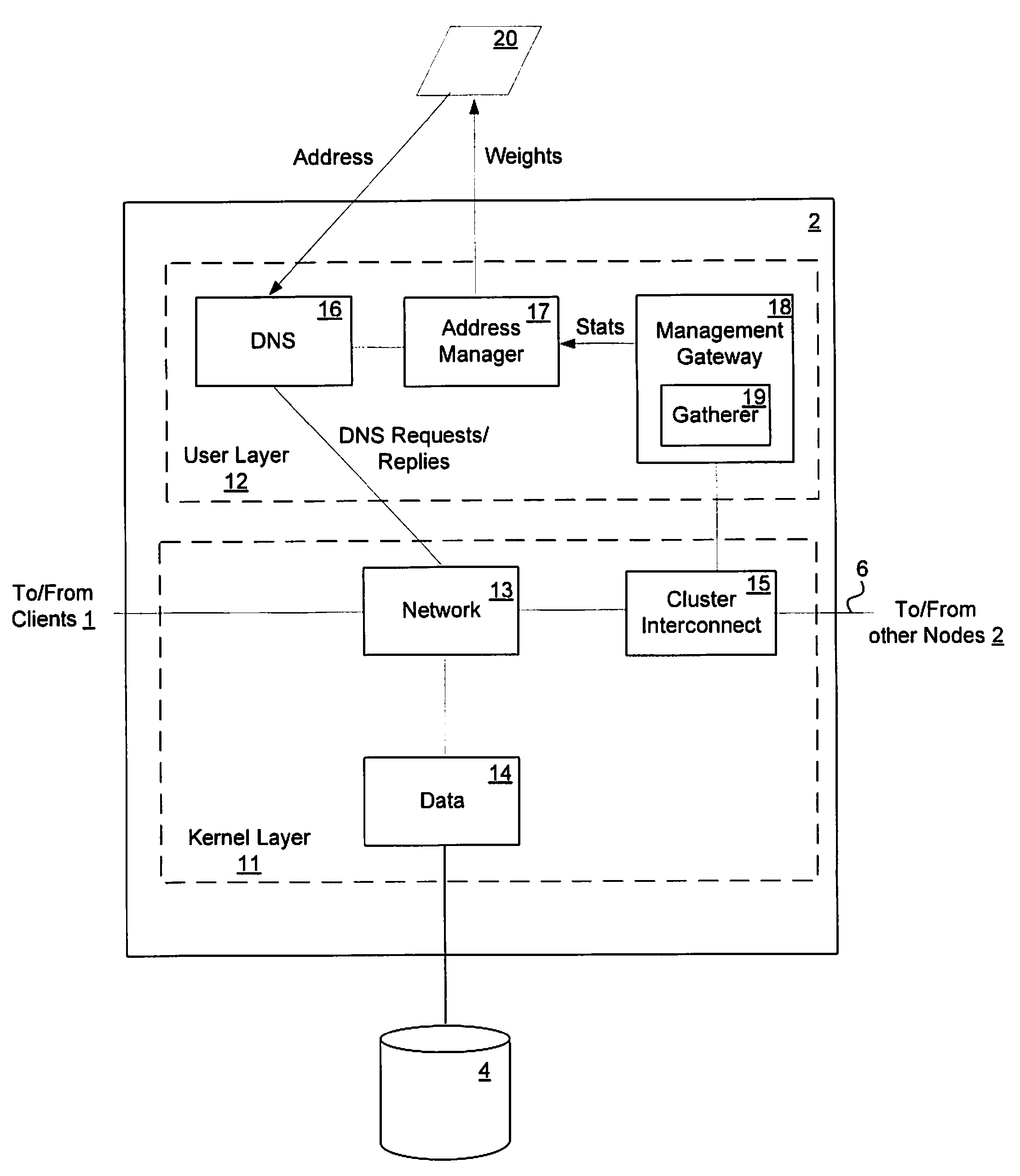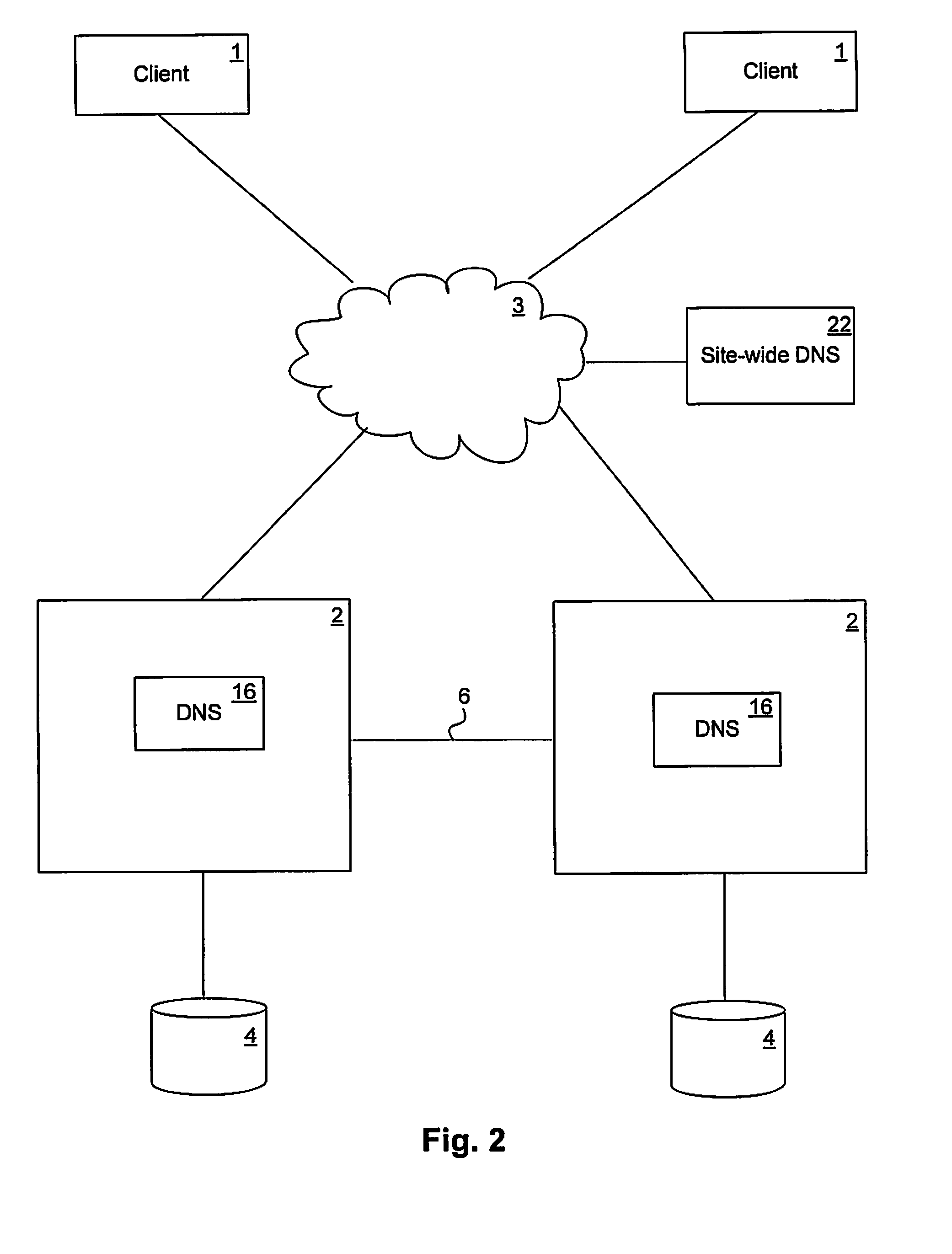Load-derived probability-based domain name service in a network storage cluster
- Summary
- Abstract
- Description
- Claims
- Application Information
AI Technical Summary
Problems solved by technology
Method used
Image
Examples
Embodiment Construction
[0021]References in this specification to “an embodiment”, “one embodiment”, or the like, mean that the particular feature, structure or characteristic being described is included in at least one embodiment of the present invention. Occurrences of such phrases in this specification do not necessarily all refer to the same embodiment.
[0022]A method and apparatus for load-derived, probability-based DNS in a network storage cluster are introduced here. The technique introduced here integrates DNS name resolution into each storage server node in a storage cluster. It allows the cluster to control the IP addresses that clients will mount in the cluster by using a weighted random distribution to resolve client DNS requests, to balance resource utilization across the various ports / nodes in the cluster.
[0023]As described further below, one of the nodes in the cluster gathers statistics relating to central processing unit (CPU) utilization and throughput for the various ports in the cluster ...
PUM
 Login to View More
Login to View More Abstract
Description
Claims
Application Information
 Login to View More
Login to View More - R&D
- Intellectual Property
- Life Sciences
- Materials
- Tech Scout
- Unparalleled Data Quality
- Higher Quality Content
- 60% Fewer Hallucinations
Browse by: Latest US Patents, China's latest patents, Technical Efficacy Thesaurus, Application Domain, Technology Topic, Popular Technical Reports.
© 2025 PatSnap. All rights reserved.Legal|Privacy policy|Modern Slavery Act Transparency Statement|Sitemap|About US| Contact US: help@patsnap.com



